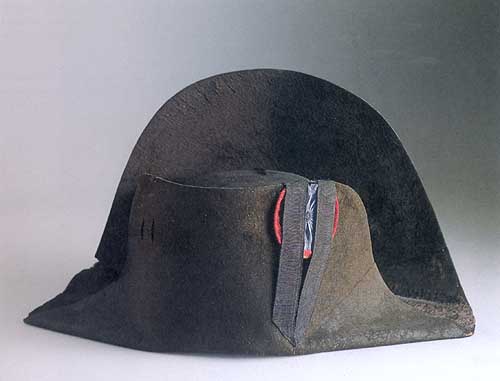Book Review
Assassination At St. Helena Revisited
Ben Weider and Sten Forshufvud (1995)
A masterful account of
one of the most nefarious deeds of the C19th. This book has all the gripping
suspense of a Sherlock Holmes story, the mystery of an episode of CSI and the human interest of an episode
of House.
Trapped on a tiny island,
an isolated speck in the southern ocean, a man is befriended by someone who is
intent on killing him - slowly. The tragic figure whose agonizing final months
were spent on Saint Helena in the South Atlantic was Napoleon Bonaparte,
Emperor of the French by the will of the French people and a ruler who had been
crowned by the Pope. But that was not how the dethroned Bourbons saw him.
For years, assassins
working on behalf of d'Artois, next in line to Louis XVIII the 'legitimate'
King of France, aka Monsieur, had been trying to kill Napoleon. Ever since the
First Consul had refused to help restore the incredibly obese Louis to the
throne, the Bourbons had been out to get him.
In his memoirs Jean-Roch
Coignet the first soldier to receive a Legion of Honour described how his
coffee had been laced with poison by a potential royalist assassin who was not
able to get to Napoleon himself. Thanks to the care of Napoleon's own doctor,
the famous Larrey, he recovered. Coignet was just one of the many innocent
victims of state sponsored terrorism organized by d'Artois and paid for by the
Bank of England. Various assassination plots were backed by Prime Minister Pitt
in London and a small clique of insiders in the British Cabinet. Parliament was
never told about these criminal proceedings that continued even when England
was supposed to be at peace with France during the short-lived Peace of Amiens.
The method of choice for
those wishing to rid themselves of the 'unwanted' during the late C18th and
early C19th was arsenic. Colourless and tasteless, it could be administered in
small doses over a period of time to alleviate any suspicion while it steadily
broke down the victim's powers of resistance and disrupted normal bodily
functions. This is what happened to Napoleon from 1815 to his sad and painful
death in May 1821. Thanks to the memoirs of his trusty and loyal valet Marchand
and those of the Grand Marshal Bertrand, the victim’s symptoms can be plotted
day by day and month by month. Repeated tests on genuine hair samples from
Napoleon scientifically confirm the presence of arsenic deep inside the hairs
and demonstrate with startling clarity how the former Emperor was given 40
doses of arsenic during his last few months of life.
Just as fascinating and
revealing as the reason for his final demise, the author Ben Weider with the
help of immense and penetrating research by Swedish toxicologist Sten
Forshufvud, makes a very convincing case for repeated earlier poisonings by
arsenic at critical times during Napoleon's life - especially during the
battles of Borodino, Leipzig and Waterloo. It has always puzzled historians why
Napoleon was 'off form' on such momentous occasions.
The dealer of death on
Saint Helena was none other than the comte de Montholon who suddenly appeared
out of the blue after Waterloo when Napoleon was at the nadir of his fortune.
Montholon was a rogue who falsely claimed he had fought in many battles yet had
never seen a shot fired in anger. He was also guilty of the embezzlement of
funds that should have been paid to men under his command. Furthermore in 1814
he had sought a position with the newly restored Louis XVIII. Napoleon had a
lot on his mind. Would he be able to escape to America? Would the British grant
him asylum? What would happen to those who had rallied to his cause? He was so
preoccupied that he made one of the worst mistakes of his life and allowed
Montholon, a feckless criminal arriviste, and would-be assassin to accompany
him into exile.
Montholon was under
orders from d'Artois and on Saint Helena he was the person in sole charge of
Napoleon's wine. Several other people got violently ill between 1815 and 1821.
Cipriani, Napoleon's servant and friend from his Corsican days, died suddenly
and mysteriously while Gourgaud and the Bertrands succumbed periodically to
some strange malady. Madame Bertrand had several miscarriages while on the
island. One by one people disappeared or like Las Cases, father and son, left
in fear of their lives - at the time these illnesses were put down to liver
disease or the 'hostile climate'. Every one of the victims had partaken of the
wine from the Emperor's wine cellar. Gourgaud even suspected poison but no one
could fathom out the real cause of all these weird ailments.
Soon, the only person
the sickly Napoleon seemed to trust was Montholon, even though his nickname
given him by the other French exiles was 'the liar'- il bugiardo. It was with Montholon’s help and assistance that
Napoleon dictated his final will and it was Montholon who was the biggest
gainer of all, a bequest of no less than two million francs. Montholon's later
memoirs were a tissue of lies and amongst the myths he perpetrated was that
Napoleon had contemplated suicide on many occasions and, above all else, that
Napoleon had died of cancer.
The autopsy carried out
by Antommarchi revealed no cancerous tumour and instead it showed the Emperor
had become very obese. How many fat people die of cancer? Cancer is a wasting
disease. Obesity is a symptom of arsenic poisoning. Furthermore, when
Napoleon's coffin was opened in 1840 prior to his remains being returned to
France, the corpse showed hardly any sign of decomposition, it looked to the
observers as if the Emperor was just asleep! The preservation of tissue is yet
another by-product of arsenic poisoning.
This superb book with
its scrupulous and meticulous scientific detail proves without a shadow of a
doubt that Napoleon Bonaparte was poisoned by a Frenchman - a Bourbon assassin
acting on the orders of d'Artois. No one worthy of the name of historian can
doubt all the evidence of murder shown in this volume. But to this day, many in
France and elsewhere refuse to acknowledge the great achievement of Sten
Forshufvud and Ben Weider in finally explaining the real cause of Napoleon's
demise. Anyone who has eyes to see, and the courage to dispassionately review
all the evidence will surely come to the same conclusion.
© 2014 John Tarttelin FINS
(Fellow
of the International Napoleonic Society - Legion of Merit)
A SOULADREAM PRODUCTION




No comments:
Post a Comment